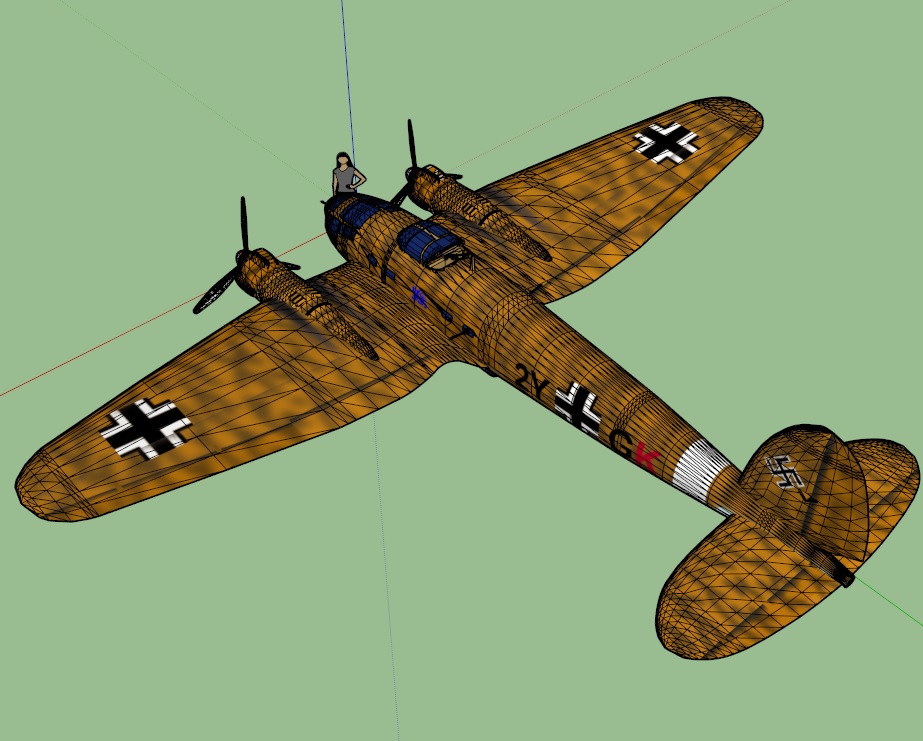 |
|
|
|
|
| 3D Model Slide Show | Image 36 of 60 | German Heinkel HE-111 |
 |
||
Heinkel He-111 The Heinkel He 111 was a German aircraft designed by Siegfried and Walter GŁnter at Heinkel Flugzeugwerke in the early 1930s. It has sometimes been described as a "wolf in sheep's clothing"[3][4] because it masqueraded as a cargo plane though its actual purpose was to provide the nascent Luftwaffe with a fast medium bomber. (Germany had been prohibited by the 1919 Treaty of Versailles from having an air force.) Perhaps the best-recognised German bomber due to the distinctive, extensively glazed "greenhouse" nose of later versions, the Heinkel 111 was the most numerous and the primary Luftwaffe bomber during the early stages of World War II. It fared well until the Battle of Britain, when its weak defensive armament, relatively low speed, and poor manoeuvrability were exposed.[4] Nevertheless, it proved capable of sustaining heavy damage and remaining airborne. As the war progressed, the He 111 was used in a variety of roles on every front in the European theatre. It was used as a strategic bomber during the Battle of Britain, a torpedo bomber during the Battle of the Atlantic, and a medium bomber and a transport aircraft on the Western, Eastern, Mediterranean, Middle Eastern, and North African Fronts. Although constantly upgraded, the Heinkel He 111 became obsolete during the latter part of the war. It was intended to be replaced by the Luftwaffe's Bomber B project, but the delays and eventual cancellation of the project forced the Luftwaffe to continue using the He 111 until the end of the war. Manufacture ceased in 1944, at which point, piston-engine bomber production was largely halted in favour of fighter aircraft. With the German bomber force virtually defunct, the He 111 was used for transport and logistics.[4] The design of the Heinkel endured after the war in the Spanish-built CASA 2.111. Spain received a batch of He 111H-16s in 1943 along with an agreement to licence-build Spanish versions. Its airframe was produced in Spain under licence by Construcciones AeronŠuticas SA. The design differed significantly in powerplant only, eventually being equipped with Rolls-Royce Merlin engines. The Heinkel's descendant continued in service until 1973. CLICK HERE TO DOWNLOAD |
||
| < back | up ^ | next > |